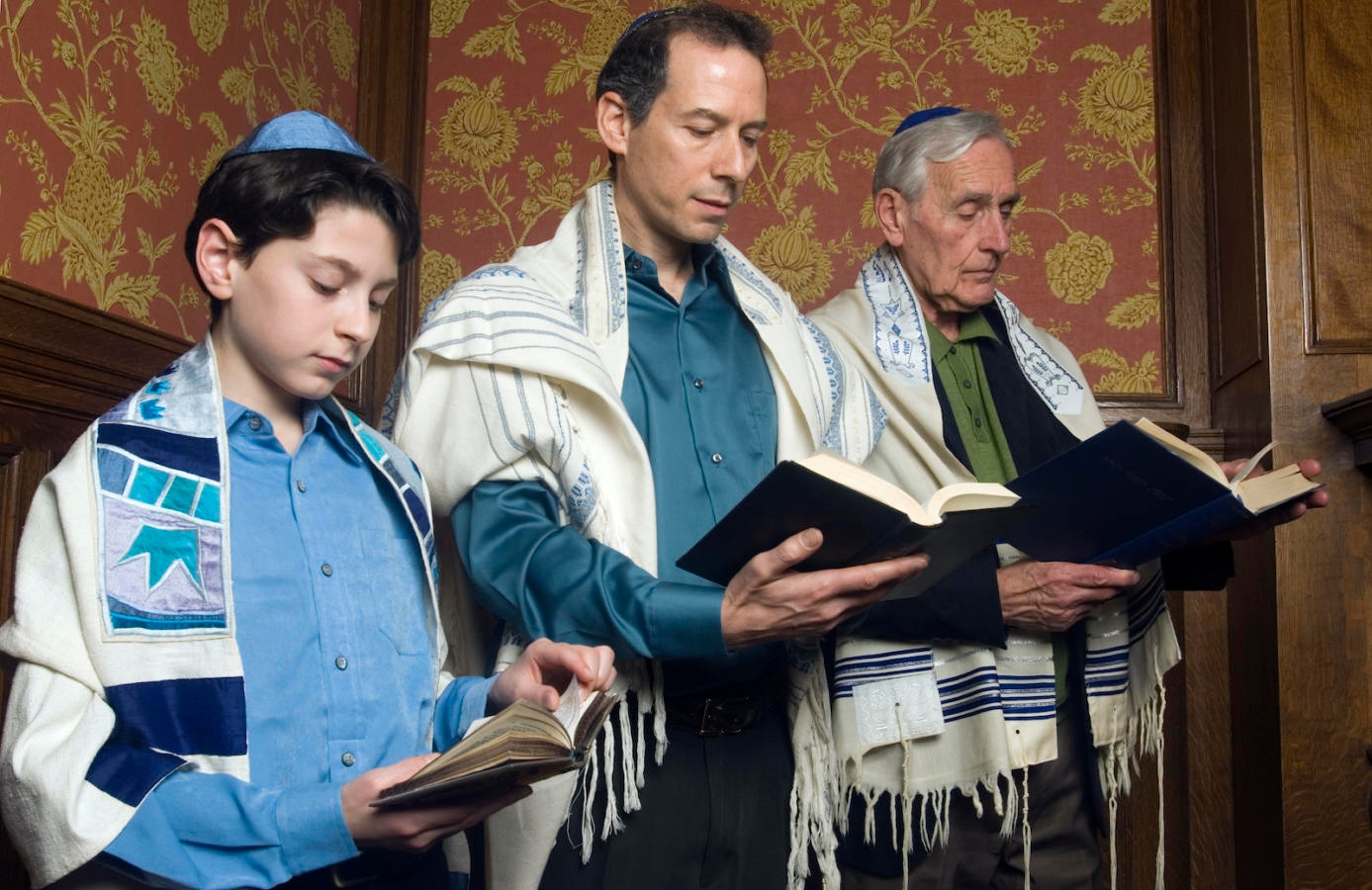Musaf is a prayer recited on Shabbat, major Jewish holidays and Rosh Chodesh, the minor observance marking the beginning of each Hebrew month. Pronounced MUH-suff (or moo-SOFF in Hebraic pronunciation), the word literally means “additional” or “supplementary.”
The prayer corresponds to the additional sacrifice offered in the ancient Temple on those days. According to the Talmud in Berakhot 26b, the daily Jewish prayer services parallel the daily offerings in the ancient Temple. Since an additional sacrifice was offered in the Temple on Shabbat, Rosh Chodesh, the three pilgrimage festivals and the High Holidays of Rosh Hashanah and Yom Kippur, we recite the Musaf prayer on those occasions today. The exception to this is Reform synagogues, which have mostly done away with Musaf.
The prayer itself is a version of the Amidah prayer. (Indeed, in the Talmud, when the rabbis to refer to “prayer,” they are referring not to the selection of psalms, blessings and other readings that make up the modern Jewish prayer service, but specifically to the Amidah, which is considered the essential component of Jewish prayer.) Like all versions of the Amidah, Musaf begins and ends with same three blessings, but the middle section changes depending on the occasion.
The most common Musaf is the one recited weekly on Shabbat. After the opening blessings of praise, the central section of the Shabbat Musaf begins with a prayer for a return to the Holy Land and the restoration of the Temple service. It then cites the verses in Numbers 28:9-10 describing the additional sacrifice offered on the Sabbath: two year-old unblemished lambs, alongside flour mixed with oil. The final part is a prayer attesting to the joyous nature of Shabbat and asking God to find favor in our rest.

Help us keep Jewish knowledge accessible to millions of people around the world.
Your donation to My Jewish Learning fuels endless journeys of Jewish discovery. With your help, My Jewish Learning can continue to provide nonstop opportunities for learning, connection and growth.
Other versions of the Musaf follow a similar pattern. The central part of the Rosh Chodesh Musaf describes the importance of the monthly sanctification of the moon and asks for the restoration of the Temple service. It then cites the verse from Numbers 28:11 describing the additional sacrifice for Rosh Chodesh: two young bulls, a ram and several yearling lambs. And it concludes with a prayer asking God to bless the coming month.
Same with Musaf for the three pilgrimage festivals — Passover, Shavuot and Sukkot. The opening and closing sections remain the same, but the middle section asks for the return of the Jewish people to the Holy Land and the restoration of the Temple service before citing the biblical passages relevant to the particular sacrifices offered on each of those holidays. It concludes with a blessing thanking God for sanctifying the festivals and the seasons in which they fall.
Only the Musaf on the High Holidays is substantially different. Though both the Rosh Hashanah and Yom Kippur Musaf open with the three blessings of praise and cite the biblical verses that describe the Temple practices on those days, the middle section of both is dramatically expanded.
On Rosh Hashanah, the middle section includes three blessings that reflect the essential themes of the day: Malchuyot (kingship), Zixhronot (remembrance) and Shofarot (the blowing of the shofar). The Yom Kippur Musaf includes the recitation of Vidui, the confessional prayer in which worshippers gently strike their chest on reciting various categories of sin. The repetition of Musaf on Yom Kippur also includes the recitation of various piyyutim (liturgical poems), a detailed description of the priestly service in the Temple on Yom Kippur, and the martyrology, a gruesome recounting of the deaths of ten famous rabbis at the hands of the Roman Empire.
On days when it is recited, Musaf is typically the last major component of the service, said immediately after the public reading of the Torah and before the concluding hymns. In many congregations, it is customary to recite the Musaf Amidah twice — once privately, and then again publicly by the cantor or prayer leader. The repetition of the Musaf Amidah is punctuated by the addition of an extended version of Kedushah, a sanctification of God using language ascribed to the heavenly angels. Kedushah is often one of the high points of the synagogue service, embellished by special melodies recited collectively or responsively.



